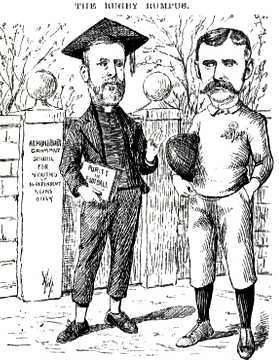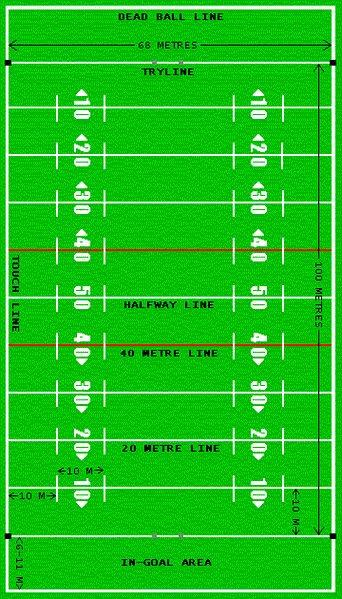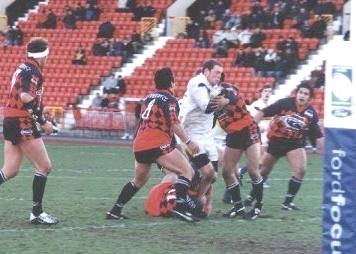|
RUGBY LEAGUE
|
||
|
HOME | BIOLOGY | FILMS | GEOGRAPHY | HISTORY | INDEX | MUSIC | SOLAR BOATS | SPORT | SPONSORS |
||
|
Rugby league is a team sport, played by two teams of 13 players. The aim is to carry an oval ball up the field towards the opponents in-goal where the ball is grounded to score a try, worth four points. Having scored the try, the team has the right to attempt to kick a goal worth a further two points if successful. The opposing team attempts to prevent the attacking team from carrying out this objective by tackling the player with the ball. It is one of the two codes of rugby, the other being rugby union.
Rugby league was initially played by a breakaway faction of the English Rugby Football Union (RFU) known as the Northern Union. When similar breakaway factions occurred from RFU-affiliated Rugby Unions in Australia and New Zealand, in 1907 and 1908 they formed associations known as Rugby Leagues and used the modified Northern Union rules. The Northern Union later changed its name to the Rugby Football League. Thus, the game became known as rugby league
A cartoon lampooning the divide in rugby. The caricatures are of Rev. Frank Marshall, an arch-opponent of broken-time payments, and James Miller, a long-time opponent of Marshall. The caption underneath reads:
History
Like most forms of football, rugby league's roots can be traced to early football history, through the playing of ball games which bear little resemblance to modern sports. It is then important to acknowledge the development of the modern codes and two separate schisms in football history.
In the nineteenth century football was most prominently played in private schools. Each school had its own rules based on whatever playing field that was available to them. The rules could be categorised as either handling or kicking forms of football. The kicking and handling forms were later codified by The Football Association and the Rugby Football Union (RFU) respectively.
In 1895 rugby football was later beset with a schism that resulted in the formation of the rebel Northern Rugby Football Union (NRFU). Although many factors played a part in the split, including the success of working class northern teams to the irritation of the gentry who ran the game, the main division was caused by the RFU decision to enforce the amateur principle of the sport, preventing 'broken time payments' to players who had taken time off work to play rugby. Northern teams typically had more working class players who could not afford to play without this compensation, in contrast to southern teams who drew their players from the middle and upper classes who did not depend on such payments. There were similar movements in other countries. In 1895 a decree by the RFU banning the playing of rugby on pitches where entrance fees were charged led to the famous meeting on 29 August 1895. Twenty-one clubs (plus Stockport who negotiated by telephone) met at The George Hotel in Huddersfield and formed the Northern Rugby Union (later to become known as rugby league). Within fifteen years more than 200 RFU clubs had left to join the rugby league revolution.
The NRFU made changes to the rules in order to increase the number of spectators as they were now dependent on money from the turnstile. Organisations allied to the NRFU changed their names from union to league, hence the names rugby league and rugby union.
Typical markings for Rugby League field
LINKS:
A - Z SPORTS INDEX
A taste for adventure capitalists
Solar Cola - a healthier alternative
|
||
|
This
website
is Copyright © 1999 & 2006 NJK. The bird |
||
|
AUTOMOTIVE | BLUEBIRD | ELECTRIC CARS | ELECTRIC CYCLES | SOLAR CARS |


